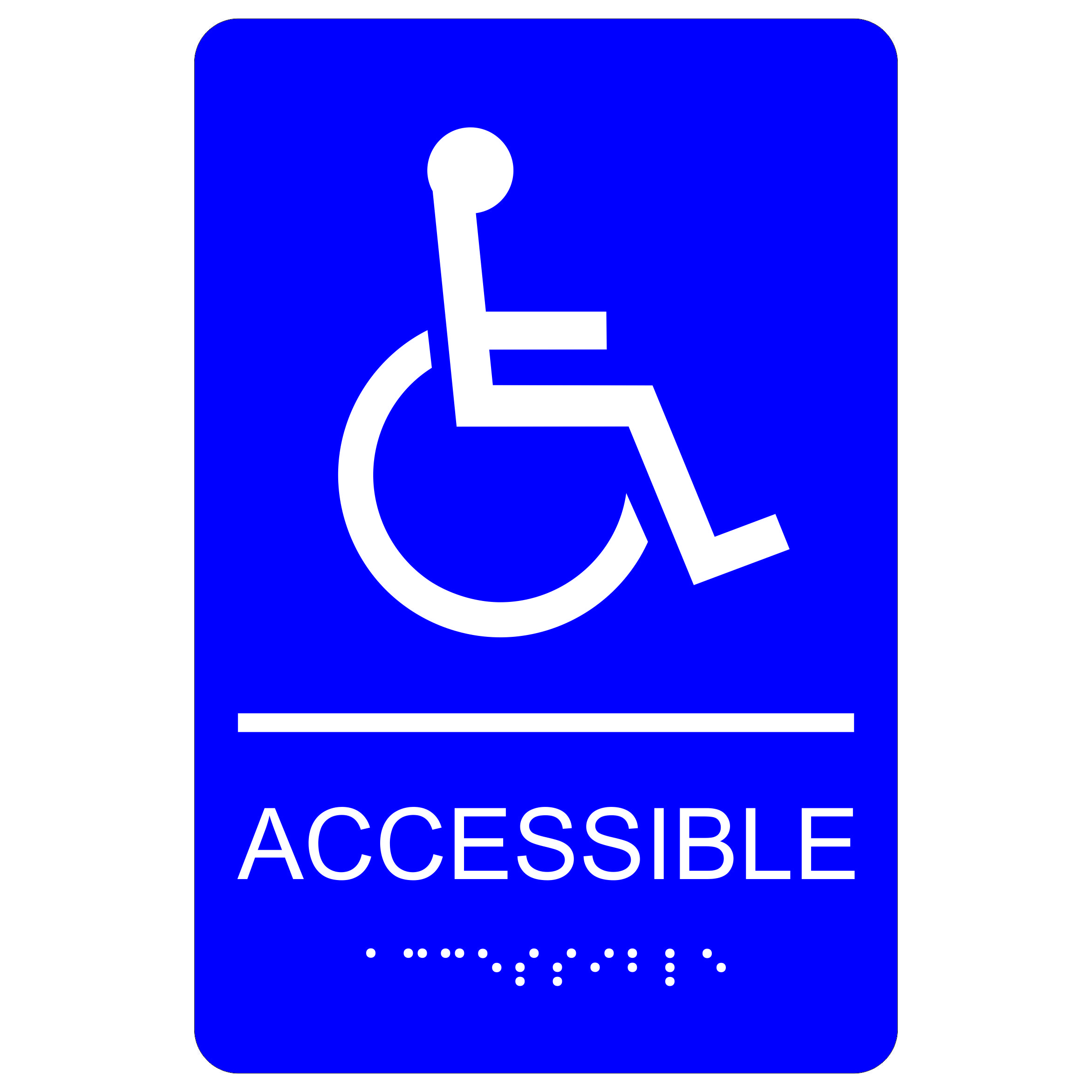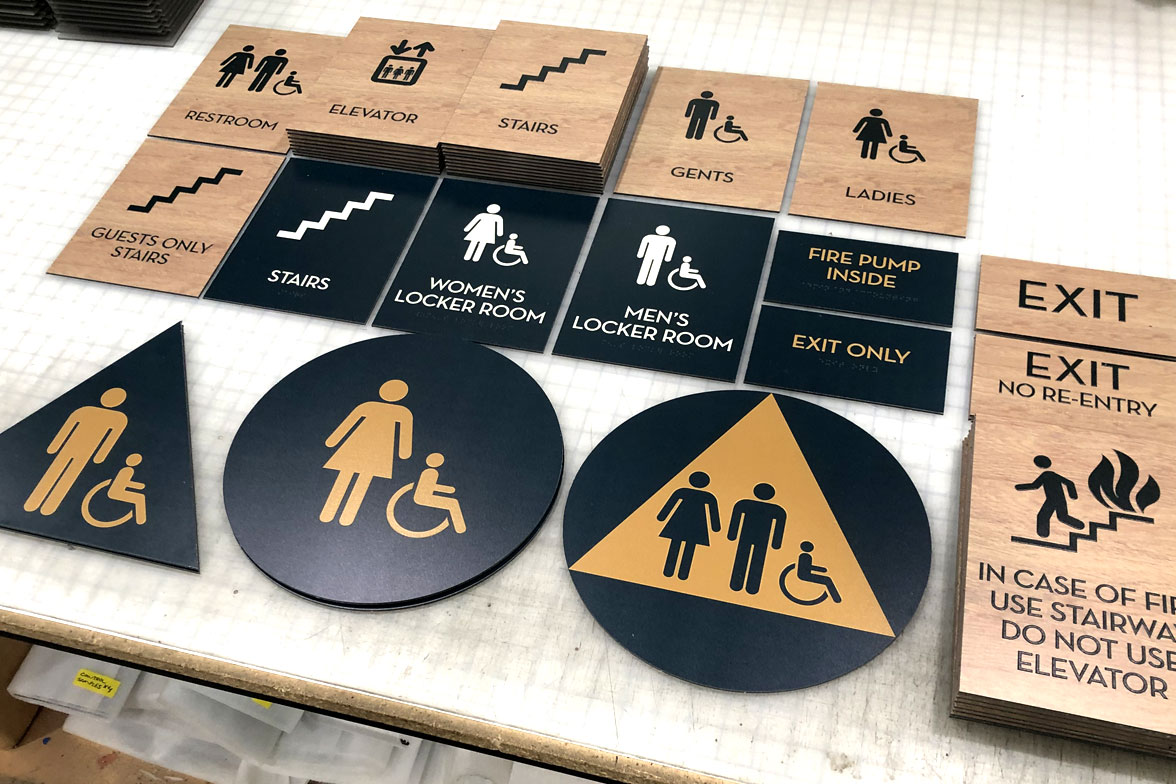The Function of ADA Signs in Abiding By Availability Requirements
The Function of ADA Signs in Abiding By Availability Requirements
Blog Article
Discovering the Trick Functions of ADA Signs for Improved Ease Of Access
In the realm of availability, ADA signs serve as quiet yet effective allies, making sure that rooms are comprehensive and navigable for people with handicaps. By integrating Braille and responsive aspects, these signs break obstacles for the aesthetically damaged, while high-contrast shade systems and readable typefaces cater to varied visual requirements.
Relevance of ADA Compliance
Ensuring compliance with the Americans with Disabilities Act (ADA) is important for cultivating inclusivity and equal access in public areas and workplaces. The ADA, passed in 1990, mandates that all public centers, companies, and transport services suit people with disabilities, ensuring they take pleasure in the exact same rights and chances as others. Compliance with ADA requirements not just fulfills legal commitments yet additionally enhances a company's credibility by demonstrating its dedication to variety and inclusivity.
Among the vital facets of ADA conformity is the execution of available signs. ADA indications are made to make certain that people with disabilities can quickly browse with spaces and structures. These indicators have to stick to certain standards relating to dimension, font style, color contrast, and placement to guarantee visibility and readability for all. Effectively applied ADA signs assists eliminate barriers that people with disabilities frequently experience, consequently advertising their self-reliance and confidence (ADA Signs).
Furthermore, adhering to ADA laws can minimize the danger of lawful consequences and potential penalties. Organizations that fall short to adhere to ADA guidelines might deal with lawsuits or fines, which can be both harmful and monetarily troublesome to their public image. Therefore, ADA conformity is essential to cultivating an equitable atmosphere for everyone.
Braille and Tactile Aspects
The consolidation of Braille and responsive components into ADA signage symbolizes the concepts of ease of access and inclusivity. These attributes are critical for people that are visually damaged or blind, enabling them to navigate public areas with better self-reliance and confidence. Braille, a tactile writing system, is essential in giving created information in a format that can be conveniently perceived with touch. It is normally positioned below the corresponding text on signage to ensure that individuals can access the info without visual assistance.
Tactile aspects extend beyond Braille and consist of elevated signs and personalities. These elements are developed to be discernible by touch, allowing individuals to recognize room numbers, toilets, leaves, and various other important locations. The ADA sets particular guidelines concerning the size, spacing, and positioning of these tactile elements to enhance readability and ensure uniformity throughout different settings.

High-Contrast Color Design
High-contrast color pattern play a critical duty in enhancing the exposure and readability of ADA signs for individuals with visual problems. These schemes are essential as they take full advantage of the difference in light reflectance in between message and background, making sure that signs are conveniently discernible, also from a distance. The Americans with Disabilities Act (ADA) mandates making use of certain color contrasts to fit those with restricted vision, making it a critical aspect of conformity.
The efficacy of high-contrast shades exists in their capability to stand out in numerous lighting conditions, consisting of dimly lit environments and locations with glow. Generally, dark message on a light history or light message on a dark history is used to accomplish ideal comparison. For example, black message on a white or yellow background gives a stark aesthetic distinction that helps in fast recognition and comprehension.

Legible Fonts and Text Size
When thinking about the layout of ADA signs, the choice of clear font styles and proper message size can not be overstated. These elements are important for making sure that indicators come to individuals with visual disabilities. The Americans with Disabilities Act (ADA) mandates that font styles need to be not italic and sans-serif, oblique, manuscript, extremely ornamental, or of uncommon type. These demands assist make sure that the message is conveniently legible from a range which the characters are distinguishable to varied target markets.
According to ADA guidelines, the minimal message height need to be 5/8 inch, and it should raise proportionally with seeing range. Uniformity in message size adds to a natural visual experience, assisting individuals in browsing atmospheres successfully.
Moreover, spacing in between letters and lines is indispensable to clarity. Adequate spacing stops characters from showing up crowded, improving readability. By adhering to these criteria, designers can dramatically enhance accessibility, making certain that signage offers its desired purpose for all people, despite their visual capabilities.
Reliable Positioning Techniques
Strategic placement of ADA signs is vital for making best use of access and making certain conformity with lawful requirements. ADA standards specify that indicators must be installed at a height in between 48 to 60 inches from the ground to guarantee they are within the line of view for both standing and seated individuals.
Additionally, signs have to be positioned beside the lock side of doors to permit very easy recognition prior to entry. This placement helps people find rooms and rooms without obstruction. In situations where there is no door, indications should be positioned on the nearby adjacent wall right here surface. Consistency in sign positioning throughout a facility enhances predictability, lowering confusion and enhancing overall customer experience.

Verdict
ADA indications play an important function in promoting ease of access by integrating functions that resolve the demands of people with specials needs. These aspects collectively foster a comprehensive setting, emphasizing the value of ADA compliance in guaranteeing equal access for all.
In the realm of ease of access, ADA indications serve as silent yet powerful allies, making certain that areas are navigable and inclusive for individuals with handicaps. The ADA, established in 1990, mandates that all public centers, employers, and transportation solutions fit individuals with handicaps, ensuring they enjoy the same legal rights and chances as others. ADA Signs. ADA signs are created to ensure that people with disabilities can quickly navigate via structures and spaces. ADA guidelines stipulate that indicators must be mounted at a height between 48 to 60 inches from the ground to ensure they are within the line of sight for both standing and seated individuals.ADA signs play an essential function in advertising ease of access by incorporating features that attend to the requirements of people with specials needs
Report this page